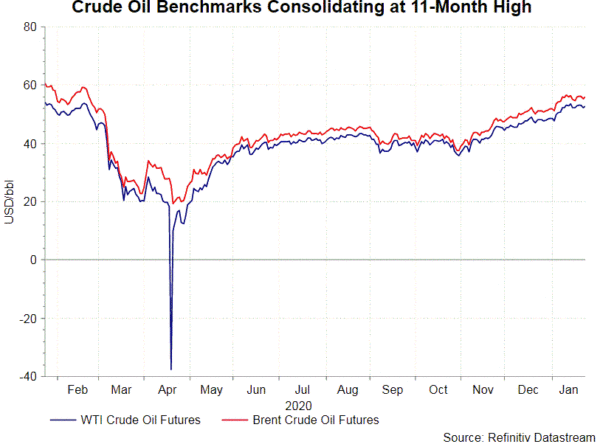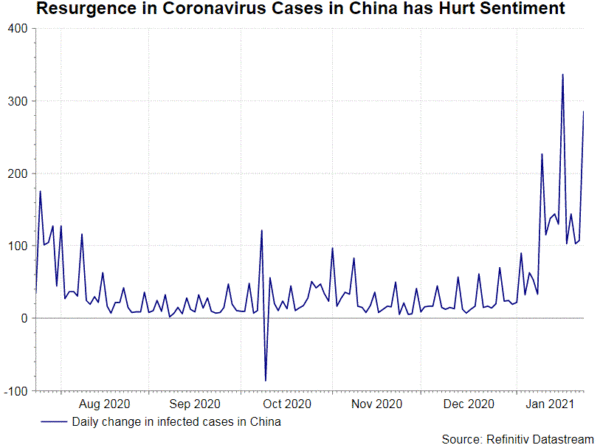Crude oil prices consolidate narrowly around 11-month high. After rebounding about 20% from the March low, upside momentum appears fading. Traders are increasingly concerned about the demand outlook which could be hurt by resurgence in coronavirus cases in China. The Chinese government reported 793 new cases last week, compared with below 300 two weeks ago. While Chinese data are always susceptible to accuracy and transparency problems, the number reported marks the highest in 10 months. Lockdown measures have intensified with 11 million people in Shijiazhuang, a provincial capital in the northern part of Hebei. Meanwhile, over 5M people are locked down in Suihua in the northern province of Heilongjiang. Stricter lockdown measures could reduce traffic and economic activity, thereby weakening demand on crude oil and petroleum products.
Besides sentiment, the near-term demand/supply outlook suggests that the risk is skewed to the downside. Resurgence of coronavirus cases in China in weeks ahead of the Lunar New Year festival is prone to drag demand from the world’s second largest oil consumer. Data suggests that travelling to and fro Chinese cities have moderated since early December and the rate is about -6% below pre-pandemic level. Flight activity has also moderated last month. AirChina’s operational data revealed that total number of passengers carried fell -10% m/m and -29% y/y in December. For full 2020, the decline was a remarkable -40%. Total Cargo tonnes carried dropped -5.4% m/m and -11..4% y/y in December. For full 2020, the decline was -22%. While seasonal factor should be taken into consideration (Lunar New Year holiday was in January last year but February this year), average flight activity remained dismal.
We do not expect traffic to improve significantly during the festive period, despite the tradition of “Lunar New Year travel rush”, when hundreds of millions of workers in cities travel back home for the holiday. In light of the pandemic, the country’s National Health Commission’s Disease Prevention and Control Bureau has instructed people to avoid unnecessary travels. We believe demand on gasoline and jet fuel should drop on an annual basis (after seasonal adjustment).
On the supply side, recent rally in oil prices should have incentivized production in the US and OPEC+ producers, aggravating the imbalance. The problem of compliance remains serious. The preliminary data, by tanker tracker Petro-Logistics, estimated that OPEC+ averages 85% so far in January. S&P Platts estimated that OPEC+ output soared to the highest in 7 months, with compliance at 98.5% in December. Both Saudi Arabia and Russia failed to fully comply to their quotas. Saudi’s output steadied at 9.01M bpd, while Russia’s edged slightly higher to 9.1. Compliance levels were 99% and 95% respectively. Another concerns lies on producers exempted from the deal. For instance, Libya’s output jumped +0.15M bpd to 1.18M bpd.















